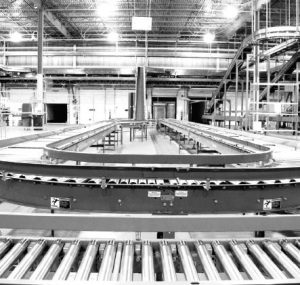 How to save time and money by implementing connectors and power-bus systems, according to HARTING
How to save time and money by implementing connectors and power-bus systems, according to HARTING
November 17, 2018 REDWIRE is news you can use from leading suppliers. Powered by FRASERS.
Posted by Harting Canada Inc
The family-owned HARTING Group is a global leader in connectivity solutions. HARTING invented the modular connector and... Read more
Subscribe
Free REDWIRE e-newsletter

Choosing connectors over hard wiring leads to cost and time savings, according to HARTING.
Today’s manufacturers are making the switch from hard wiring to connectors in applications such as power distribution, machine connectivity, and motor control. Choosing connectors over hard wiring produces significant cost and time savings, as well as increasing automation-system reliability. In this article, HARTING offers its expert advice on design, integration, and installation considerations to help you determine if a connector solution is right for your application.
Shifting design architectures to decentralized control enable cost savings and design flexibility
As an example, a centralized control system may be designed with a large central control cabinet and 480VAC power coming into a disconnect. The power is then distributed within the control panel to individual circuits. These circuits are then run to individual areas of the factory floor for distribution to automated devices such as switches, sensors, vision, or motion control. These devices must be within a limited distance of the main control panel. This means large amounts of copper wire, conduit, and other infrastructure are needed to distribute power to all remote circuits.
The cost of copper and lack of flexibility of centralized controls systems have lead to the increase in popularity of decentralized control strategies. In a decentralized control architecture, a power-bus distribution system is created for common voltages such as 480VAC, 220VAC, 110VAC, or 24VDC circuits and multiple device protocols. This system has two main benefits:
- Hardware standardization
- Design flexibility and customization
Consider the following points when designing your decentralized control system:
- When selecting a connector solution, ensure that it is physically impossible to install a connector to the wrong receptacle.
- Select power-bus products that meet the current requirements of the circuit and follow the NEC tap rule guidelines.
- Calculate the current requirements for the overall feeder circuit needed to maximize the benefits of the power-bus system.
- Use a disconnect when limited by smaller gauge wire drops to the device.
- Follow the UL 508 guidelines to determine the machine or panel interrupting ratings. If the component is not marked, reference UL 508A Table SB4.1 – assumed maximum Short Circuit Current Rating (SCCR) for unmarked components and UL 2237 for Multi-Point Interconnection Power Cable Assemblies for Industrial Machinery. Also reference UL File Number E318390 for a list of PVVA Assemblies and PVVA2 Recognized Components.
- In order to be compliant with UL 508 lockout-tagout guidelines at the drive controller or across the line motor, select a motor rated disconnect with auxiliary contact to show orientation of the switch.
You are now ready to implement a decentralized control architecture with simple feeder-circuit and branch-circuit drops to devices. These efficient time-saving solutions enable easy installation and maintenance and require less copper.
Using Connectors in Motor-Control Applications Enables Cost Savings and Reliability
Traditionally, motors were hardwired to the control box, which was permanently mounted to the machine. Conducting scheduled or unscheduled maintenance became time-consuming when disconnecting and re-connecting the motor.
Today, modern designs that utilize a connector on the motor or in the control panel save time and money during an outage, due to labour and production savings. The savings to the end user becomes exponential the more motors there are in the application.
Cost savings due to material, labour, and up time from using a HARTING connector solution can be realized after the second or third installation or connect/disconnect cycle as shown below. This may include the initial OEM installation and a machine move or maintenance by the end user.
For more information, contact HARTING.
Share
Posted by Harting Canada Inc
The family-owned HARTING Group is a global leader in connectivity solutions. HARTING invented the modular connector and... Read more